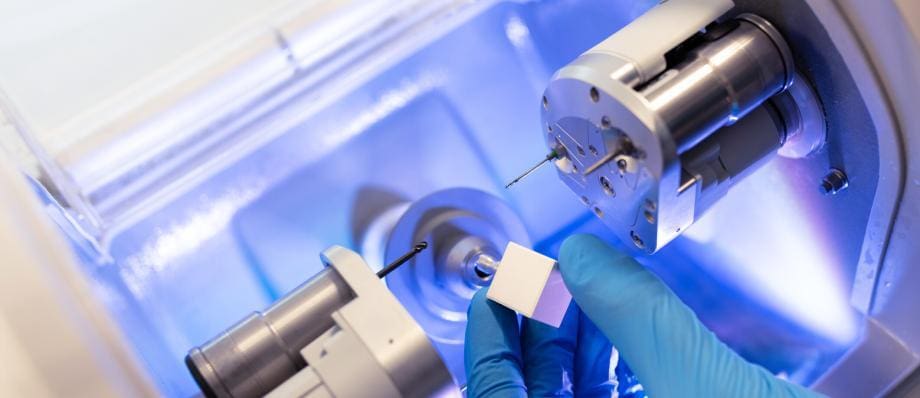Computer-Aided Design and Computer-Aided Manufacturing (CAD/CAM) technology has significantly impacted various industries, including dentistry. In the realm of dentistry, CAD/CAM technology plays a pivotal role in transforming traditional approaches to dental procedures. This article explores the advent and evolution of CAD/CAM in dentistry, its applications, benefits, challenges, and the future prospects of this groundbreaking technology.
What is CAD/CAM?
CAD/CAM technology refers to the use of computer software and hardware to assist in the design and manufacturing of products. In dentistry, this technology has revolutionized the way dental professionals approach various procedures, ranging from designing crowns to creating dental implants. The integration of CAD/CAM in dentistry has not only enhanced precision but also increased efficiency and patient satisfaction.
Evolution of CAD/CAM in Dentistry
The utilization of CAD/CAM technology in dentistry dates back to the 1970s, with the primary focus on automating the design and fabrication of dental restorations. Early CAD/CAM systems were limited in their capabilities and lacked the precision required for intricate dental work. Over the years, advancements in computer technology and imaging techniques have greatly improved CAD/CAM systems, making them an integral part of modern dental practice.
Early Stages
The early stages of CAD/CAM in dentistry saw the development of systems for fabricating inlays and onlays, and crowns. However, the materials and accuracy were limited, making these systems less versatile for comprehensive dental procedures. The introduction of ceramic materials and improvements in imaging technologies significantly enhanced the accuracy and aesthetics of restorations.
Present State
In the present day, CAD/CAM technology is widely used for a myriad of dental applications. From creating crowns and bridges to designing custom dental implants and orthodontic appliances, CAD/CAM systems have evolved to offer high precision and excellent esthetics. These systems use digital impressions obtained through intraoral scanners, eliminating the need for traditional messy impressions.
Applications of CAD/CAM in Dentistry
CAD/CAM technology finds applications in various aspects of dentistry, revolutionizing the way dental professionals diagnose, plan, and execute treatments. Some significant applications include:
- Dental Restorations
- Dental Implants
- Orthodontics
- Prosthodontics
- Dental Crowns and Bridges
- Teeth Whitening Trays
- Invisalign and Clear Aligners
- Endodontic Procedures
- Temporomandibular Joint (TMJ) Appliances
- Maxillofacial Implants and Reconstructions
- Smile Design
- Educational and Training Models
Dental Restorations
CAD/CAM technology is extensively used in fabricating crowns, bridges, inlays, onlays, and veneers. The digital design allows for precise customization of restorations to fit the patient’s specific dental anatomy seamlessly.
Dental Implants
Custom dental implants can be designed using CAD/CAM technology based on digital scans of the patient’s jaw and dentition. This ensures a perfect fit and reduces the time required for the implant procedure.
Orthodontics
In orthodontics, CAD/CAM is employed to design and create custom orthodontic appliances, such as braces and aligners. The digital design enhances the efficiency and effectiveness of orthodontic treatments.
Prosthodontics
CAD/CAM technology aids in the fabrication of removable and fixed partial dentures, improving the accuracy and comfort for the patients.
Dental Crowns and Bridges
CAD/CAM technology is extensively used in the design and manufacturing of dental crowns and bridges. Dentists can obtain precise digital impressions of a patient’s teeth, which are then used to design custom crowns and bridges. The digital designs are sent to a milling machine, which carves the restorations from a block of ceramic or composite material, resulting in highly accurate and aesthetically pleasing prosthetics.
Teeth Whitening Trays
Custom teeth whitening trays can be efficiently designed and manufactured using CAD/CAM technology. The software allows for the creation of trays that perfectly fit a patient’s teeth, ensuring uniform application of whitening agents for effective and safe teeth whitening treatments.
Invisalign and Clear Aligners
CAD/CAM technology is pivotal in the production of Invisalign and other clear aligners. After scanning the patient’s teeth, the digital data is used to design a series of aligners that gradually move the teeth into the desired positions. This digital approach offers a precise fit and minimizes discomfort for the patient during orthodontic treatment.
Endodontic Procedures
CAD/CAM technology assists in creating customized endodontic posts. These posts are used to support a dental crown after a root canal procedure. The system can design posts that match the exact shape and size required for the tooth, enhancing stability and durability.
Temporomandibular Joint (TMJ) Appliances
CAD/CAM technology is employed in the design and production of custom TMJ appliances, such as splints and occlusal guards. The digital design ensures a precise fit and alignment, aiding in the treatment of TMJ disorders and related symptoms.
Maxillofacial Implants and Reconstructions
CAD/CAM is utilized in the fabrication of maxillofacial implants and reconstructions for patients who have suffered trauma, congenital deformities, or required surgical interventions. The technology helps design and create custom implants that perfectly fit the patient’s facial structure, restoring both function and aesthetics.
Smile Design
CAD/CAM technology is employed in smile design procedures, allowing dentists to digitally plan and design smile makeovers for patients. This includes reshaping and resizing teeth to create a more aesthetically pleasing smile. Patients can visualize the expected outcomes before the actual procedures, enhancing communication and expectations.
Educational and Training Models
CAD/CAM is used to create educational and training models for dental students. These models replicate dental structures and conditions, providing students with hands-on experience and a better understanding of dental anatomy, procedures, and treatment planning.
Benefits of CAD/CAM in Dentistry
The integration of CAD/CAM technology into dental practice offers a multitude of benefits:
- Precision and Accuracy
- Time Efficiency
- Improved Aesthetics
- Minimized Errors
- Patient Satisfaction
Precision and Accuracy
CAD/CAM systems provide high precision and accuracy in the design and fabrication of dental restorations and appliances. This ensures an excellent fit and function for the patient.
Time Efficiency
The digital workflow significantly reduces the time required for various procedures. Digital impressions are quick to obtain, and the fabrication of restorations is faster compared to traditional methods.
Improved Aesthetics
CAD/CAM technology allows for highly aesthetic restorations by enabling precise color matching and customization, resulting in natural-looking teeth.
Minimized Errors
The digital design and manufacturing process minimizes human errors often associated with traditional techniques, enhancing the overall quality of the final product.
Patient Satisfaction
Patients benefit from the efficiency and accuracy of CAD/CAM procedures, resulting in reduced chair time and enhanced comfort, ultimately leading to higher patient satisfaction.
Challenges and Limitations
While CAD/CAM technology has transformed dental practice, it is not without its challenges and limitations:
- Cost
- Learning Curve
- Material Limitations
- Maintenance and Upgrades
Cost
The initial investment in CAD/CAM equipment and software can be substantial for dental practices. This cost may limit smaller practices from adopting this technology.
Learning Curve
Dental professionals need to undergo training to effectively utilize CAD/CAM systems. The learning curve can be steep for those unfamiliar with digital technologies.
Material Limitations
Although advancements have been made, some materials used in CAD/CAM processes may not possess the same characteristics as traditional materials, limiting their applications.
Maintenance and Upgrades
Regular maintenance and upgrades of CAD/CAM equipment and software are necessary to ensure optimal performance and keep up with technological advancements.
Future Trends and Prospects
The future of CAD/CAM in dentistry appears promising, with ongoing advancements poised to address current limitations and further enhance its capabilities. Some emerging trends include:
- Integration of AI
- Enhanced Materials
- Tele-dentistry Integration
- Customized Treatment Plans
Integration of AI
Artificial intelligence (AI) is expected to play a significant role in CAD/CAM, aiding in automated design processes, treatment planning, and material selection, thus optimizing outcomes.
Enhanced Materials
Research and development in dental materials will likely result in new materials specifically designed for CAD/CAM processes, overcoming the current limitations and expanding the range of applications.
Tele-dentistry Integration
CAD/CAM could integrate with tele-dentistry, enabling remote consultations and treatment planning, providing access to specialized care for underserved areas.
Customized Treatment Plans
With the aid of CAD/CAM and AI, treatment plans will become highly customized for each patient, optimizing outcomes and improving overall oral health.
Conclusion
CAD/CAM technology has emerged as a transformative force in dentistry, revolutionizing the way dental procedures are approached and executed. The precision, efficiency, and patient satisfaction brought about by CAD/CAM systems make them an indispensable tool in modern dental practice. As advancements continue to address existing challenges and enhance capabilities, CAD/CAM is set to shape the future of dentistry, providing innovative solutions for improved patient care and outcomes.





